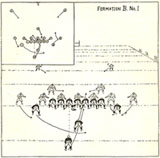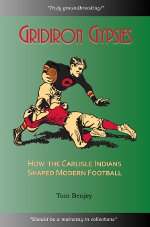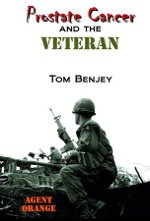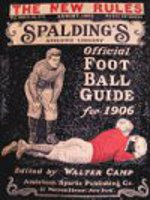It may be that the reporter was trying to determine if Jim Thorpe was the first to rush 2,000 yards in a single season rather than in his career at Carlisle. I say that because, in her article in the current edition of Smithsonian Magazine, Sally Jenkins wrote, “He returned to lead Carlisle’s football team to a 12-1-1 record, running for 1,869 yards on 191 attempts—more yards in a season than O.J. Simpson would run for USC in 1968. And that total doesn’t include yardage from two games Thorpe played in. It’s possible that, among the things Thorpe did in 1912, he was college football’s first 2,000-yard rusher.”
Again because stats aren’t my thing, I contacted Tex Noel about the single-season rushing statistics.Tex responded quickly with:
I do know that JT was NOT the 1st back to rush for 100+ yards in a game. (3 had best game totals; his 362 vs Pennsylvania in 1912 in 9th of 10 spots.)
Yards Player, Team and Season
2032 Ken Strong, New York University, 1928
1869 Jim Thorpe, Carlisle, 1912
1500 Lindsey Donnell, Cumberland TN, 1935
1450 Glenn Presnell, Nebraska, 1927
1421 Norman “Red” Strader, St. Mary’s CA, 1924
1393 Lloyd Brazil, Detroit, 1928
1349 Earl “Dutch” Clark, Colorado College, 1928
1287 Frank Briante, New York University, 1927
1163 Morley Drury, USC, 1927
1074 John “Shipwreck” Kelly, Kentucky, 1931
Source: Stars of an Earlier Autumn (C) 2011, Tex Noel.
Tex has the same total rushing yards for 1912 that Jenkins has but without the caveat that he played in two games for which his statistics weren’t recorded. I suspect that, because Tex is so familiar with the haphazard way in which statistics were recorded in those days, he felt no need to point out that all numbers from that era are to be taken with a reasonable amount of salt.
I then looked in the 1913 Spalding’s Guide, but it made no mention of Thorpe’s (or anyone else’s) rushing yards for 1913. It did include a table of “Famous Runs” compiled by Parke Davis on which Carlisle players got their share of listings. Jim Thorpe was mentioned twice:
1) 80-yard run from scrimmage against Penn on November 16, 1911
2) 60-yard run from scrimmage against Penn on October 24, 1908
Neither of his longest runs were in 1912, the year freshest in Parke Davis’s mind, but longer runs made earlier by Charles Dillon, Gus Welch, and Thaddeus Redwater were.
I don’t know which games for which Thorpe’s rushing yardage is missing but it is possible that he ran for a combined 131 yards in them. It is just as possible that he didn’t, particularly if they were games in which Thorpe wasn’t needed and Pop Warner rested him to get a look at less experienced players in game situations. Thorpe’s 156 yards per game average for the 12 games for which records exist imply that he would have run for enough yardage to total more than 2,000 yards for the season. It’s just as possible that he watched from the sidelines so that he would be available for the tougher opponents in this grueling 14-game schedule.
P.S. Yesterday, this blog received its 50,000th view and highest monthly total (with a day to go).













